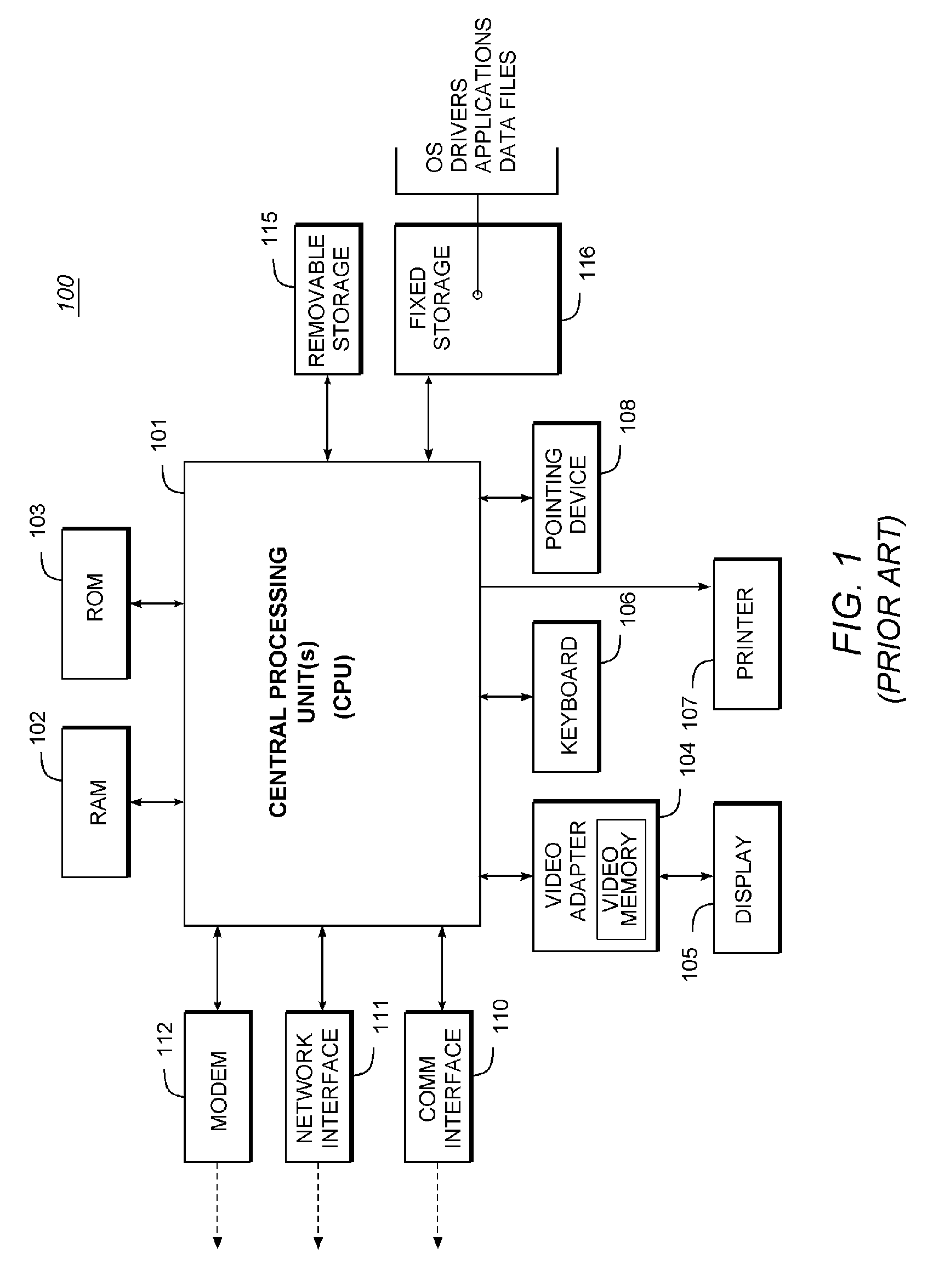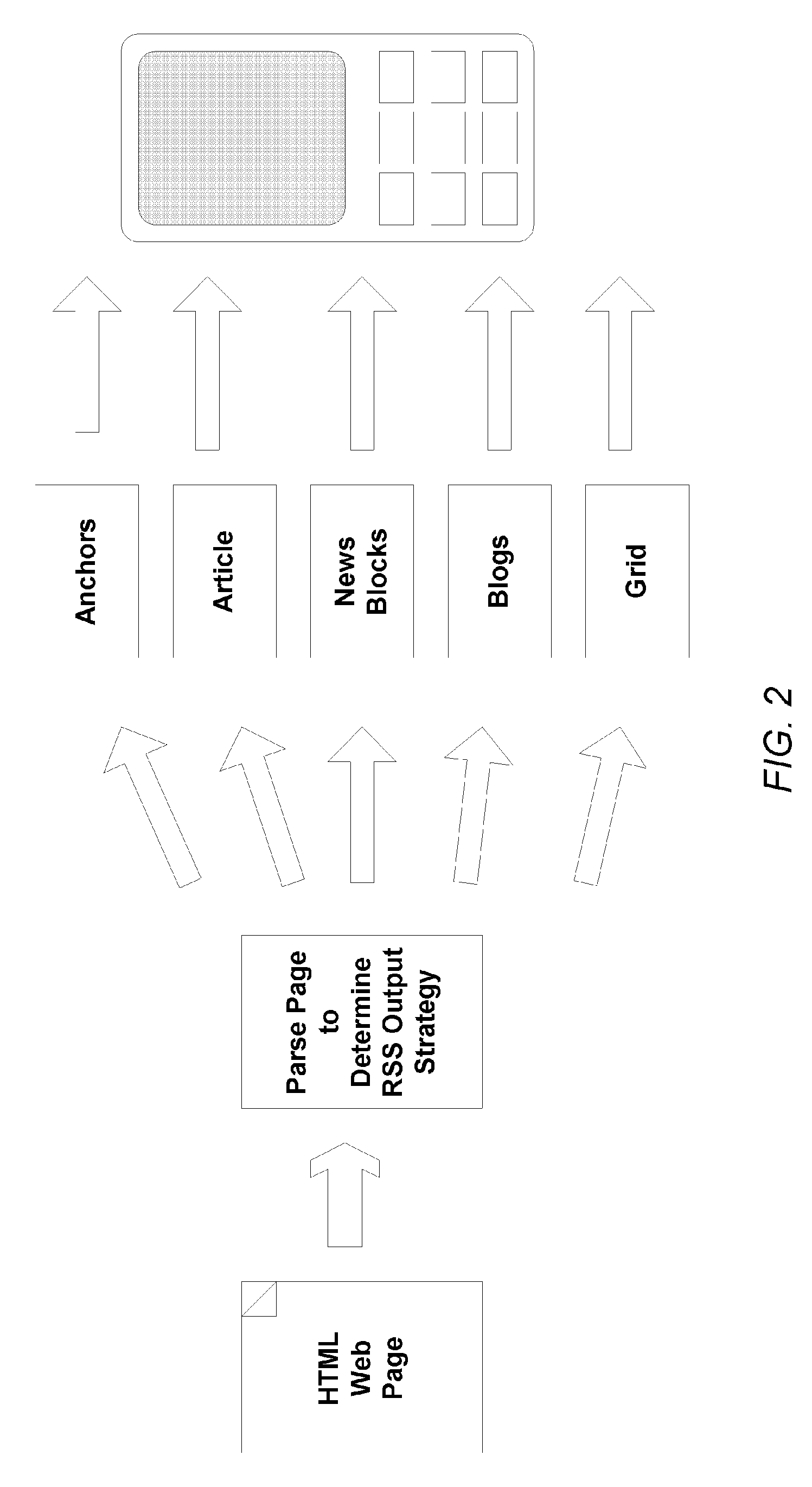System and Method for Delivering Mobile RSS Content
a mobile device and content technology, applied in the field of information processing for mobile devices, can solve the problems of limited memory and processor resources, complicated challenges, and limited resources
- Summary
- Abstract
- Description
- Claims
- Application Information
AI Technical Summary
Benefits of technology
Problems solved by technology
Method used
Image
Examples
example # 1
EXAMPLE #1
Anchor Page
[0094]Example URL:
[0095]http: / / cnnfn.com (illustrated in FIG. 5A)
[0096]Rules:
[0097]Each anchor will have a RSS bullet title.
[0098]RSS title will have the original HREF of the cnnfn page article.
[0099]Ignore ads if possible.
[0100]Rank titles in RSS by anchor title style. For example, large fonts titles at the top of the RSS feed.
[0101]Ignore anchors to index pages such as “cnn.com / sports / ” but instead favor content (e.g., cnn.com / news / 1223334.htm).
[0102]The XML generated by the system of the present invention may be compared with the XML from the same page that is generated by target Web site (e.g., cnnfn.com). A high degree of overlap of articles in both their native XML form and generated XML form provides an indication that good results are being obtained on sites without an XML feed.
example # 2
EXAMPLE #2
Article Page
[0103]Example URL:
[0104]http: / / www.realclearpolitics.com / articles / 2006 / 04 / the_congresswoman_and the_admi.html (illustrated in FIG. 5B)
[0105]Rules:
[0106]Looking for an “area” enclosed within a table with a large run of text.
[0107]The “article text run” should be the dominant run on the page. In other words, there generally should not be more than one article on a page. Styles for title and date timestamp are used to identify more than one article.
[0108]The article should not have “many” embedded anchors.
[0109]Looking for text styles that suggest an area such as 1 title style and something akin to a “body text” style.
[0110]A “date” style is also helpful.
[0111]Embedded tables are helpful in identifying advertisements which are not included in the returned article.
[0112]There is a “minimum text length” that will define an article.
example # 3
EXAMPLE #3
Blog Page
[0113]Example URL:
[0114]http: / / www.horsepigcow.com / index.html (illustrated in FIG. 5C)
[0115]Rules:
[0116]Very similar to an article page but with a repeated pattern of date, title, and text run.
[0117]Should also have repeated patterns of blog terms such as “posted by”, “trackback” and “comments.”
PUM
 Login to View More
Login to View More Abstract
Description
Claims
Application Information
 Login to View More
Login to View More - R&D
- Intellectual Property
- Life Sciences
- Materials
- Tech Scout
- Unparalleled Data Quality
- Higher Quality Content
- 60% Fewer Hallucinations
Browse by: Latest US Patents, China's latest patents, Technical Efficacy Thesaurus, Application Domain, Technology Topic, Popular Technical Reports.
© 2025 PatSnap. All rights reserved.Legal|Privacy policy|Modern Slavery Act Transparency Statement|Sitemap|About US| Contact US: help@patsnap.com



